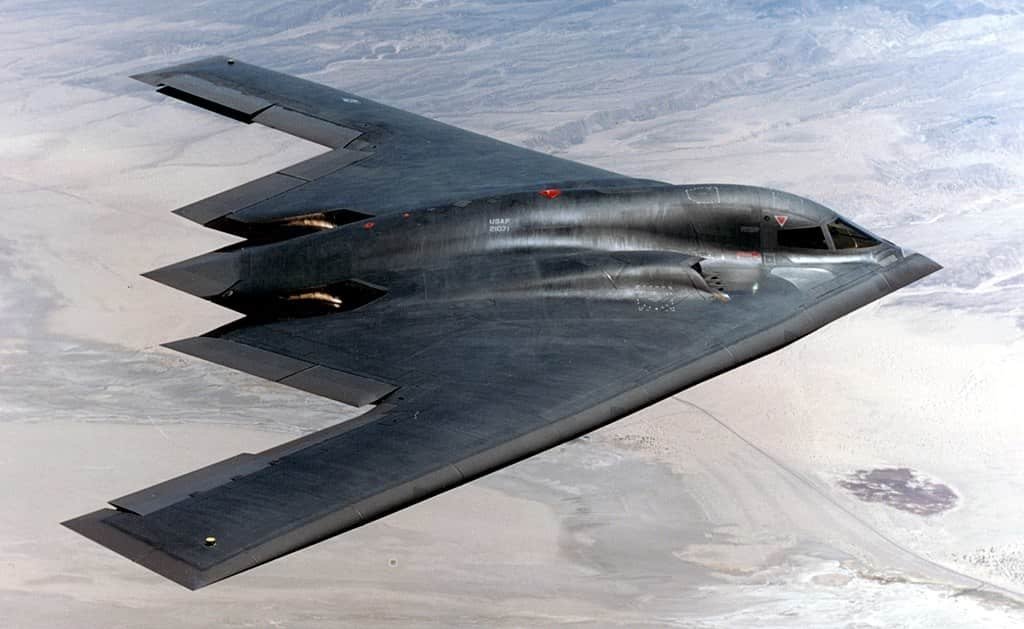Stealth Plane
In a conflict, the stealth plane is a valuable asset, making it less visible to the adversary and thus making attacks unpredictable.
The stealth plane escapes detection by radar and all other electromagnetic and electronic devices. Its movement is made almost imperceptible thanks to its geometric shapes and the use of a material having numerous cavities intended to absorb radar waves.
This is done by reducing the emissions emitted or reflected by the object to be located. In the case of aircraft, the term stealth mainly refers to those technologies that are intended to make it difficult to locate using radar without the object to be located itself having to actively emit interference signals. Stealth techniques are mainly used in the military sector.
How to detect a stealth plane?
Passive radar can detect stealth planes because they are designed to minimize the return to the transmitting radar and not to limit their signature in other directions.
Depending on the power of the radar, stealth aircraft would be detected, but would be confused with small flying animals that feature an RCS (Radar Cross Section) of an eagle, for example. In conjunction with flight tactics, with the stealth capacity of aircraft, a pilot of a Stealth aircraft is virtually invisible (to radar). Read also: New Technologies and All Fields Examples of New Era Technologies
How it works
Camouflage aircraft only throw back a small amount of energy to the transmitter. The shape contributes significantly to the fact that fewer electromagnetic waves are reflected than with conventional aircraft. In addition, special radar-absorbing materials (RAM) are used on the surface to reduce the radar cross-section.
The exhaust jet of the engines is kept cool by special precautions on slower aircraft, or its outlet is obscured downwards in order to provide infrared detectors with the lowest possible infrared signature. In the first guy known as stealth bomber, the F-117 Nighthawk, the characteristic angular shape ensures that encountering radar waves are not reflected towards the signal source.
In addition, the use of composite materials instead of metal for stabilizers ensures low radar signature.
Example Stealth Plane
The F-117A Nighthawk is a twin -engine, single – seat aircraft that was developed by Lockheed for the US Air Force in the 1970s and manufactured with minor modifications until 1990. It was the world’s first combat aircraft that successfully used stealth technology to avoid detectable waste heat and radar reflections. Although the F-117 was officially decommissioned in April 2008, individual aircraft are still used for tests.

U.S. Air Force photo by Staff Sgt. DERRICK C. GOODE. Photo credit: US Air Force / Wikimedia Commons
Special features of the stealth aircraft
- To stay cloaked, stealth planes have to carry their weapons internally, which reduces their maximum weapon load. For example, an F-117 Nighthawk can only carry two Mark 84 or GBU-10/12/27 Paveway bombs , which is unfavorable in relation to the very high cost of the bomber.
- As long as stealth planes open their weapon bay (or one of their weapon bays) to fire a weapon, they generate a higher (= easier to locate) radar echo.
- As soon as the coating is damaged, the radar echo can increase significantly under certain circumstances. The protection of the sensitive coating from kerosene and environmental influences and the repairing of damage result in a high maintenance effort.
- Due to their function, stealth aircraft cannot be retrofitted with external attachments or modernized without reducing their stealth properties. This makes their modernization very time-consuming, expensive or in some cases impossible.
- Stealth technology is only effective against active types of radar. The newer passive radar can even detect stealth aircraft through echoes in radio, radio and television frequencies and locate them with an accuracy of 10 meters.
- Earlier Soviet radar systems from the 1970s used longer-wave carrier frequencies that are more strongly reflected by stealth aircraft. Well-known systems are the P-18 Terek (NATO code: Spoon Rest D) and P-14 Lena (NATO code: Tall King) systems .
- Some modern stealth aircraft and drones are designed without vertical stabilizers (B-2, RQ-170 ). As a result, they are usually unstable about at least one spatial axis , so that their flight attitude must be regulated by flight attitude computers . Stealth fighter aircraft can be aerodynamically unstable about multiple axes for reasons of maneuverability (F-22) or due to aerodynamic limitations of the concept (F-117).
Sources: PinterPandai, DARPA, Science Direct
Photo source: USGov Military-Air Force / Wikimedia Commons
Photo description: US Air Force B-2 Spirit Bomber. The B-2 Spirit is a stealth aircraft / multi-role bomber capable of delivering both conventional and nuclear munitions. A dramatic leap forward in technology, the bomber was a major milestone in the US bomber modernization program. The B-2 carries enormous firepower, in no time, anywhere in the world through previously impenetrable defenses.



